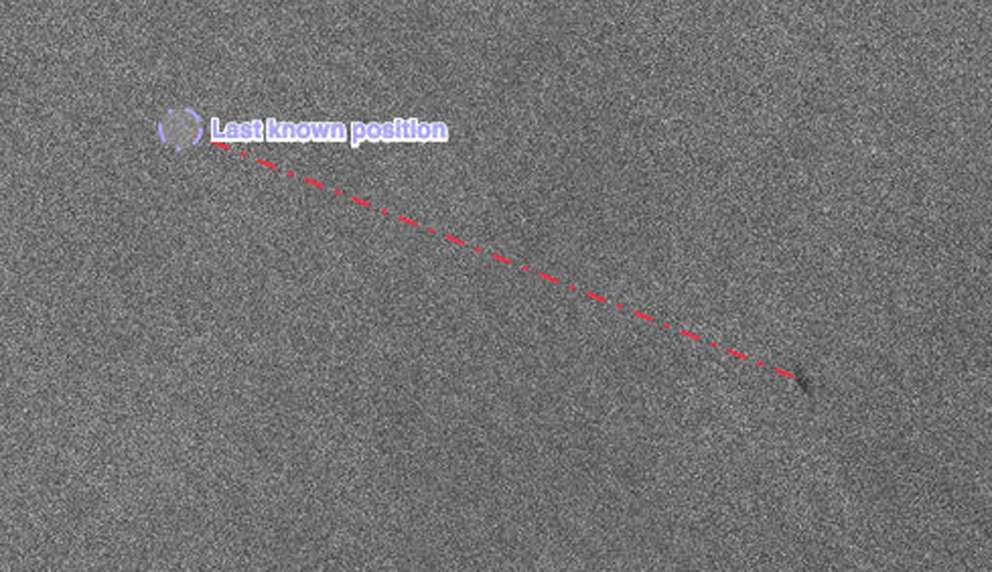The European Space Agency (ESA) says the Sentinel-1A radar satellite has detected a potential oil slick in the eastern Mediterranean Sea – in the same area where EgyptAir flight MS804 disappeared early in the morning of 19th May on its way from Paris to Cairo. The satellite's C-band Synthetic Aperture Radar (SAR) provides all-weather, day-and-night imagery of Earth’s surface.
The image was acquired by Sentinel-1A on 19th May at 16:00 GMT (18:00 CEST). It was obtained in extra-wide 400km swath mode, with horizontal polarization. ESA has given information related to the image to the relevant authorities to support the search operations.
Since the plane disappeared, ESA and experts have been scrutinising satellite data to see if anything could be found to indicate wreckage or oil floating on the sea. According to the satellite image, the slick was at 33°32' N / 29°13' E – about 40km southeast of the last known location of the aircraft. The slick is about 2 km long. A second image from 20th May at 04:00 GMT (06:00 CEST) shows that the slick has drifted by about 5km.
There is, of course, no guarantee that the slick is from the missing aircraft.
The Sentinel-2A satellite will pass above the same area on 22nd May, and experts will continue to study the images returned for further clues. Sentinel-1A and 2A were launched in April 2014 and June 2015, respectively. Both satellites were launched as part of Europe’s Copernicus environmental monitoring programme, led by the European Commission.



